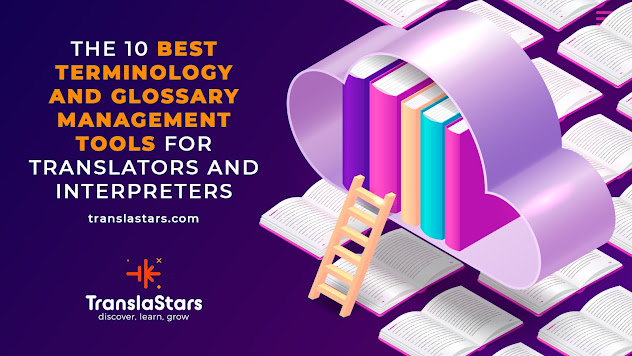5 tips to work as a translation project manager
Congratulations on considering a role that demands a unique blend of organization, curiosity and attention to detail.
In this blog post, Alexander Ekhilevskiy, Senior Localization Program Manager at Vista, will share five invaluable tips for aspiring translation project managers like you.
Read on to learn more!
Table of contents
Understand what PM is about today
Choose your side
Mind the triangle
The personal is professional
Being organized is not enough
Understand what PM is about today
The translation project manager role has evolved significantly over the past 20 years.
“It used to be a much more transactional job, mostly about managing files. As technology has developed, the focus has shifted to relationship management with vendors", explains Alexander.
According to him, freelance language professionals must be seen as an extension of your team.
“The commitment, the results, and everything will be so different when you have a personal relationship with the translator than if you just send an email or an automated notification. In that sense, while Translation Management Systems (TMS) are extremely helpful to project managers and translators to some degree, they tend to ruin this personal connection because the files are uploaded automatically and the linguist is notified, translates something automatically, completes the project, and there is no human interaction. But as efficient as it might seem, I think it's detrimental to this personal relationship, making the linguists feel like they're just machines in a factory”, adds Alexander.
Spoiler alert! Alexander will be one of the instructors of our brand-new Localization Management Academy starting in a few weeks!
Broaden your horizons and seize the most promising career opportunities in the industry with this 4-week online program.
Choose your side
Translation project managers can either work for translation agencies (or language services providers, LSPs) or companies (usually referred to as clients). In both cases, there are pros and cons.
Pros and cons of working in an LSP
“When you work in an LSP, you are surrounded by people who are all familiar with localization. This means that you can focus on delivering high-quality work without having to explain the basics of localization. Your main goal is to meet the project requirements, ensure that the final client is happy, and deliver everything on time”, says Alexander, who has spent 11 years at a major LSP, where he progressed from Translation Project Manager to Team Lead, focusing mostly on e-Learning projects and working with clients like Nikon and IKEA.
On the other hand, working for an LSP often means having much less insight into the project or, as translators often complain, much less context.
"It's a long chain of people involved, and in my experience, it can sometimes break down and the translation can become diluted if it's a rush job. This doesn't usually happen on the client side, because they know why the translation is urgent and what is it for”, explains Alexander.
Pros and cons of working for companies
"When you work on the client side, you often have to work with people who don't understand the translation process. They may see it as an afterthought or a simple task that can be easily outsourced. As a project manager, you need to educate them about the importance of localization and teach them how the process works, why it is so important to have the context, why the linguists cannot just go and translate whatever sentence, etc”, explains our interviewee.
In addition, Alexander explains that it can be at times challenging to demonstrate to clients that localization is worth the investment.
“Localization is a complex process, and it can be difficult to measure its ROI. This is a major challenge in the acquisition industry, and especially if you work on the client side, you have to constantly prove to your stakeholders that localization is worth the investment and that it can help to promote their products and achieve better results”, adds the Senior Program Manager.
But, as we mentioned earlier, there is a silver lining to working on the client’s side: context.
"On the other hand, working on the client side gives you access to much more context and understanding of the project. You can see who the target audience is and what is the bigger picture, such as how this campaign is connected to the ones the company launched in previous quarters”, concludes the interviewee.
Mind the triangle
Cost, quality, speed: this is the golden triangle of project management.
“We know that in theory it's never possible to meet the three of them to the utmost, but that's something that a project manager needs to strive for”, says Alexander.
A beginner project manager's top priority will always be striving for quality. However, not every translation requires top-notch quality.
"Different types of translations require different qualities. For example, an internal note that will be hung on the fridge in the company kitchen does not need to be as creative or polished as a marketing video script. However, both translations should be grammatically correct and free of spelling errors. The level of detail and attention to quality will depend on the purpose of the translation and the target audience”, adds the Senior Program Manager.
On the other side of the triangle, explaining costs to clients can be challenging.
"Everyone wants to save money on translation and localization costs, especially since machine translation is now a thing. So it's understandable why people question why translation costs so much. But it's interesting to think about how we don't question the cost of other services, like going to the dentist. We just pay and go with it”, says Alexander.
And last, but not least, speed.
“We are not saving lives, so it is important to be realistic about deadlines. If a translation is urgent, we need to ask why it is urgent. Is it really a matter of life or death, or is it just a request that no one has ever questioned? Once we understand the urgency, we can manage the client's expectations accordingly. If the translation is truly urgent, we may need to sacrifice some quality in order to meet the deadline. However, as long as the client is aware of the implications, this is acceptable”, concludes Alexander.
The personal is professional
Project managers can play a significant role in selecting translators to work with.
As Alexander points out, specialization isn't the only factor to consider: “Localization is a lot about people management, and you need to build a personal relationship with your translators. This means feeling comfortable with them, trusting them to do a good job, and knowing that they will be treated fairly. I believe that this is more important than the translator's expertise in the specific area they are translating”.
Being organized is not enough
When you think about project management, organization might be the first skill that comes to your mind.
But, according to Alexander, there are many more that are equally important:
Attention to detail: There are many small details that need to be checked and corrected in a localization project. A project manager needs to be able to spot these details and make sure they are addressed.
Prioritization: A project manager needs to be able to prioritize tasks and make sure that the most important ones are completed first. They also need to be able to manage the client's expectations and understand what can be done in a given timeframe.
People skills: A project manager needs to be able to build relationships with people and get the best out of them. This includes linguists, clients, and other stakeholders.
Curiosity: The localization industry is constantly evolving, so a project manager needs to be open to new technologies and be willing to learn how to use them.
If you liked this article, read also:
10 job hunting tips to find the best jobs in the translation industry
The 5 best platforms to find work for translators and interpreters
10 best translation professionals to follow to boost your career (2022-2023 edition)


.png)



Great post!
ReplyDeleteProject management services Hyderabad
To succeed as a translation project manager, mastering people skills, attention to detail, and embracing tools like Atmosphere Switch for smoother workflow transitions is essential. Balancing cost, quality, and speed while building strong translator relationships defines long-term success.
ReplyDeleteA Translation Project Manager oversees multilingual projects, ensuring accuracy, consistency, and timely delivery. With free switch games , managers can explore interactive tools that streamline translation workflows and enhance collaboration.
ReplyDeleteI generally check this kind of article and I found your article which is related to my interest.Clases De Ingles Individuales Genuinely it is good and instructive information. Thankful to you for sharing an article like this.
ReplyDelete